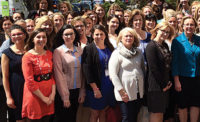Accidental fires are an unusual occurrence inmost workplaces; however it is very important to provide employees with proper training in fire prevention and protection.
A professional fire safety consultation will benefit you by providing information in line with the latest health and safety regulations. Here are a few commonsense tips that will help you to develop housekeeping and working practices that minimize your risk of a workplace fire. Fire prevention in the workplace consists of four steps.
- Implement a program that includes preparation, prevention and recognition of fire hazards.
- Make sure employees practice proper handling of combustible and flammable material.
- Maintain safe housekeeping practices that reduce the risk of fire danger.
- Always keep adequate fire suppression equipment in your work area to extinguish fire before it goes out of control.
Here are some general tips to help prevent accidental fires at work, as well as in your home.
- Dispense flammable liquids only in areas free from sparks, flames and other sources of ignition.
- Keep all containers of flammable liquids closed or covered when they are not in use and return them to their designated storage area when you are done using them.
- When dispensing flammable liquid from one container to another, bond the two containers together and ground one. This helps prevent the buildup of static electricity, which can create a spark and ignite the vapors.
- Discard all rags and waste materials that are impregnated with flammable or combustible liquids, oil or grease in covered, self-closing metal containers (should be colored red and well-labeled) and empty these containers into designated receptacles.
- Keep all wastepaper, cardboard and similar combustible materials cleaned up and placed in designated waste receptacles. Letting these items accumulate on the floor or other work areas creates an unnecessary fire hazard.
- Only use flame or spark-producing equipment such as welders, torches and grinders in designated areas. Special approval of management must be obtained to use this type equipment in areas where it is not normally used.
- Smoking is allowed only in designated areas. Always dispose of butts in designated receptacles. Never dispose of smoked cigarettes or matches in dumpsters.
- Make certain to avoid stacking materials too close to fire sprinkler heads. Doing so can affect their ability to adequately disperse water when activated. Usually, we must maintain a minimum of 18 in. of clearance below the level of the sprinkler heads.
- When using kitchen appliances such as toasters and toaster ovens be sure they are turned off when not in use. Never put pre-topped items (such as butter or peanut butter) into the toaster.
- Make sure portable fire extinguishers remain fully charged and accessible at all times. It is important to remember fire extinguishers are to be used on small fires. Post 911 signs above each extinguisher. If the fire is too big or too fast to control with an extinguisher, get everyone away from the fire and wait for the fire department to arrive. Don’t be foolish and try to be the hero.
To paraphrase Smokey the Bear: “Only you can prevent workplace fires.”
Author bio: Melanie E. Felladore is human resources and safety manager at Waterbury, Ct.-based TORRCO and is a member of the ASA Safety Committee and Women in Industry Division. Eye on Safety is produced each month by ASA’s Safety Committee.





